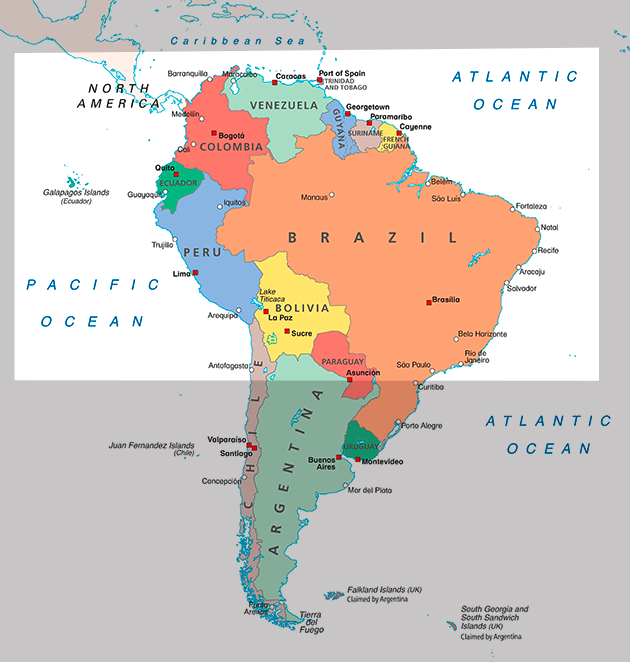
Northern South America
Northern South America comprises all the land area of South America east of the Isthmus of Panama and south to 20 degrees south of the equator. The Andes mountain range follows the line of the western coast where it meets the Pacific Ocean. The land drops rapidly eastwards to the Amazon River basin and continues east until it meets the Atlantic Ocean. The region is home to the world’s highest waterfall Angel Falls in Venezuela; the largest river (by volume and second by length), the Amazon River; the northern section of the longest mountain range, the Andes; the largest rainforest, the Amazon rainforest; the highest capital city, La Paz in Bolivia and the highest navigable lake in the world, Lake Titicaca.
The region is rich in resources of precious minerals and fuels and has a huge variety of plant and animal species. Brazil is by far the largest country in the region both by area and population. Brazil is one of the world’s newly industrialized countries (NIC). Some schools of thought predict that by 2050 the largest economies in the world will be China, USA, India, Brazil, and Mexico.